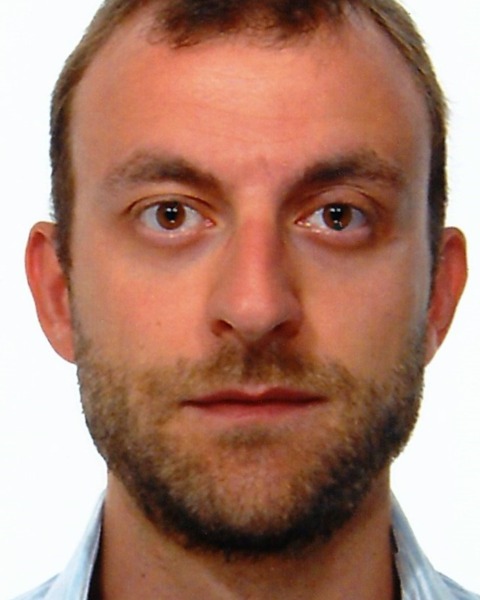Back
Poster, Podium & Video Sessions
Video
V10: Adrenal & Renal Oncology I
V10-07: Near-Infrared Fluorescence imaging Technology applications in Urologic Surgery
Sunday, May 15, 2022
4:30 PM – 4:40 PM
Location: Video Abstracts Theater
Riccardo Mastroianni*, Gabriele Tuderti, Umberto Anceschi, Alfredo Maria Bove, Aldo Brassetti, Mariaconsiglia Ferriero, Leonardo Misuraca, Giuseppe Simone, Rome, Italy

Riccardo Mastroianni, MD
IRCCS "Regina Elena" National Cancer Institute
Video Presenter(s)
Introduction: Clinical applications of near-infrared fluorescence (NIRF) with Indocyanine green (ICG) technology are rapidly growing. Potential improvements especially for functional outcomes have been described in different urologic procedures. In this video we highlights our experience with multiple clinical applications of NIRF-ICG technology in distinct urologic procedures.
Methods: In this video we collected multiple clinical applications of NIRF technology: ICG-marking of totally endophytic renal tumors selected for partial nephrectomy, assessment of thrombus extent during level III IVC tumor thrombectomy, identification of functioning adenomas during adrenal surgery, assessment of ureteral vascularization during robot assisted radical cystectomy and during ureteral reimplantation, identification of urethra and ejaculatory ducts during Madigan prostatectomy.
Results: First, NIRF-ICG technique was demonstrated useful to mark endophytic renal tumors in patients selected for purely off-clamp robotic partial nephrectomy. Lipiodol indocyanine green mixture was selectively delivered in the tertiary ordered arteries feeding the tumor. In this way, the use of NIRF imaging allow to easily recognize endophytic renal tumor. Therefore, parenchyma incision, margins scoring and deep part of enucleation were performed under NIRF imaging. Secondly, intravenous injection of ICG was used during robot-assisted radical nephrectomy with level III IVC tumor thrombectomy in order to better define thrombus boundaries, to control cranial IVC thrombus edge, to expect IVC lumen and to confirm proper restoration of IVC flow. Then, NIRF-ICG technology was used to easily identify hypervascularized adrenal mass during robotic partial adrenalectomy and to evaluate proper perfusion of distal ureters both during RARC and robot-assisted ureteral reimplantation. Finally, NIRF-ICG technology was reported as an essential tool during robot-assisted Madigan prostatectomy when ejaculation preservation is planned. A retrograde injection of ICG throw the urethral catheter placed on navicular fossa allowed to easily recognize proximal prostatic urethra, and therefore to preserve ejaculatory function avoiding unintended violation of the urinary tract.
Conclusions: NIRF-ICG technology sounds a safe and feasible procedure. This technique allows to easy identify key anatomical landmarks, providing information about tissue vasculature and perfusion. NIRF-ICG technique demonstrated to potentially improve functional outcomes of robotic procedures even if larger series with longer follow-up are needed.
Source of Funding: none
Methods: In this video we collected multiple clinical applications of NIRF technology: ICG-marking of totally endophytic renal tumors selected for partial nephrectomy, assessment of thrombus extent during level III IVC tumor thrombectomy, identification of functioning adenomas during adrenal surgery, assessment of ureteral vascularization during robot assisted radical cystectomy and during ureteral reimplantation, identification of urethra and ejaculatory ducts during Madigan prostatectomy.
Results: First, NIRF-ICG technique was demonstrated useful to mark endophytic renal tumors in patients selected for purely off-clamp robotic partial nephrectomy. Lipiodol indocyanine green mixture was selectively delivered in the tertiary ordered arteries feeding the tumor. In this way, the use of NIRF imaging allow to easily recognize endophytic renal tumor. Therefore, parenchyma incision, margins scoring and deep part of enucleation were performed under NIRF imaging. Secondly, intravenous injection of ICG was used during robot-assisted radical nephrectomy with level III IVC tumor thrombectomy in order to better define thrombus boundaries, to control cranial IVC thrombus edge, to expect IVC lumen and to confirm proper restoration of IVC flow. Then, NIRF-ICG technology was used to easily identify hypervascularized adrenal mass during robotic partial adrenalectomy and to evaluate proper perfusion of distal ureters both during RARC and robot-assisted ureteral reimplantation. Finally, NIRF-ICG technology was reported as an essential tool during robot-assisted Madigan prostatectomy when ejaculation preservation is planned. A retrograde injection of ICG throw the urethral catheter placed on navicular fossa allowed to easily recognize proximal prostatic urethra, and therefore to preserve ejaculatory function avoiding unintended violation of the urinary tract.
Conclusions: NIRF-ICG technology sounds a safe and feasible procedure. This technique allows to easy identify key anatomical landmarks, providing information about tissue vasculature and perfusion. NIRF-ICG technique demonstrated to potentially improve functional outcomes of robotic procedures even if larger series with longer follow-up are needed.
Source of Funding: none

.jpg)
.jpg)